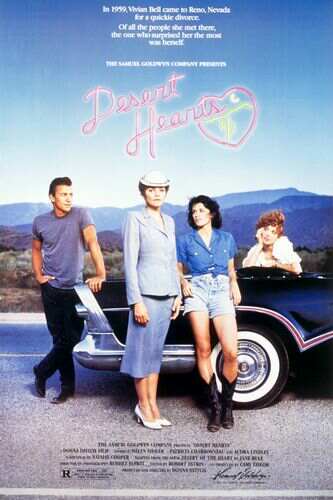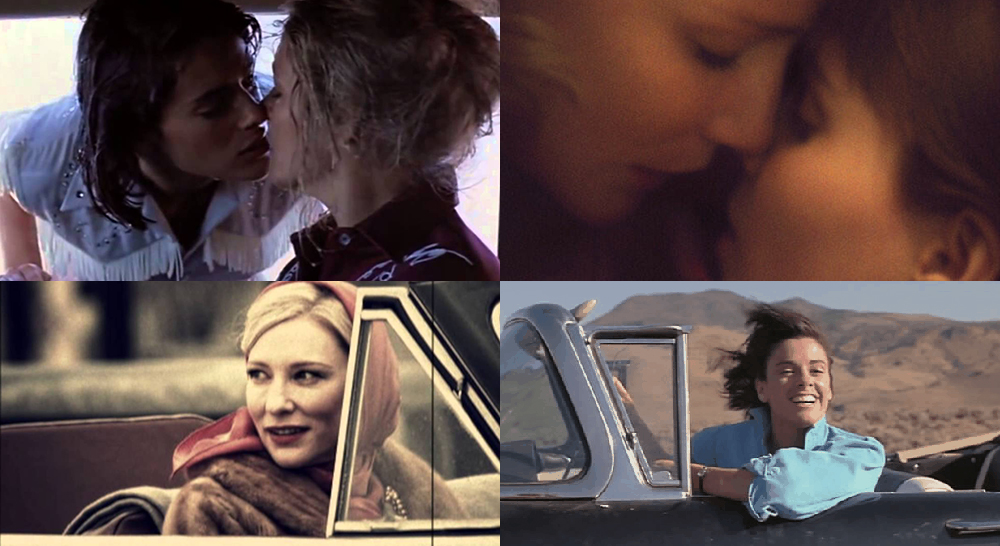Team Film Experience isn't at Sundance this year, so instead we're going back through the years to discover and revisit some Sundance classics. Here is Glenn with the 1986 winner of the Special Jury Prize, Donna Deitch's Desert Hearts.
 It was a happy accident that on a whim I picked the 1985 drama Desert Hearts to write about today given we’re still very much wrapped up in the warm bosom of Carol. I had not seen Donna Deitch’s film before and had no idea prior to sitting down to watch it that it shared so much in common with Carol, 30 years its senior. I was aware of course that it was a lesbian romance, and I was also aware that the film is (famously) regarded as the first film to allow a lesbian romance to end without tragedy. Still, there were moments where beat-for-beat the films are almost identical. I would be interested to read the novels side by side and see if they’re as alike as their adaptations.
It was a happy accident that on a whim I picked the 1985 drama Desert Hearts to write about today given we’re still very much wrapped up in the warm bosom of Carol. I had not seen Donna Deitch’s film before and had no idea prior to sitting down to watch it that it shared so much in common with Carol, 30 years its senior. I was aware of course that it was a lesbian romance, and I was also aware that the film is (famously) regarded as the first film to allow a lesbian romance to end without tragedy. Still, there were moments where beat-for-beat the films are almost identical. I would be interested to read the novels side by side and see if they’re as alike as their adaptations.
Adapted from Jane Rule’s novel Desert of the Heart, this Sundance Special Jury Prize winner is also set in the 1950s with two women (Helen Shaver and Independent Spirit Award nominee Patricia Charbonneau) of a significant age difference, the eldest of whom is currently in the process of a divorce, who come together much to the surprise of at least one of the pair – although this time it is the younger of the two who finds herself attempting to coax the older woman out from behind her guard. Most striking is how both end not just on similarly optimistic notes, but with almost identical build. Of course, Desert Hearts differs in the way its romance blossoms under the heat of a Reno sun, Shaver’s impractical clothing choices and sever hairstyle slowly becoming more free and loose as her worldview expands thanks to the frank openness of Charbonneau’s younger casino floor-girl a neat costume-oriented touch among the film's mise-en-scene.
I recently wrote about how under-represented lesbian cinema is in most queer cinema coverage. And that's not surprising given that the filmmaking industry, film criticism and cinema academia circles all appear to be as male-dominated as each other. The Advocate’s perplexing Top 175 Essential Films of All Time for LGBT Viewers list featured only 40 titles that could legitimately claim to have women central to their stories (and that’s being brave and including Showgirls), while Autostraddle’s comparative 100 Best Lesbian Movies of All Time features all too many movies that I would guess are completely unknown to many, suggesting the field is far thinner. Even GALECA, an organization of which I am a member, included only two films about gay women (The Kids are All Right and Boys Don’t Cry) in their recent and awkwardly titled 10 Best LGBTQA Films Every Non-LGBTQA Person Should See list. Another reason why Carol feels so vital and important, especially when placed alongside Grandma, Appropriate Behaviour and even Bessie and Freeheld, which suggests maybe the scales are about to tip.
Desert Hearts wasn’t the first, but it’s certainly one of the most significant and an important forebearer to Todd Haynes and Phyllis Nagy's sublime Carol. Certainly, Desert Hearts suffers from being a debut feature and being made in a time when independent narrative cinema was not as it is today. It’s not, however, surprising to see the film won a prize at Sundance (besting another early moment for gay cinema, Bill Sherwood’s Parting Glances) given how sincere and earnest it is, yet isn't afraid to portray its themes so openly both in words and in visuals. Its most memorable moment, for instance, is also its sexiest – an erotic sex scene that has influenced lesbian representation ever since.
If you fell under Carol's spell then I would highly recommend Desert Hearts. There's certainly nothing cold or chilly about this one.
